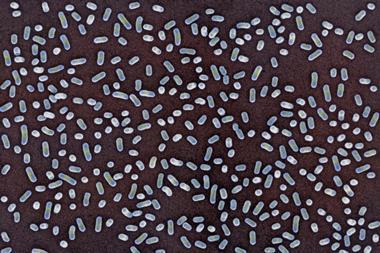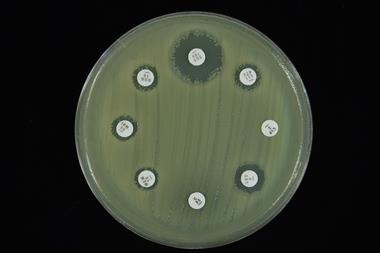Over a decade ago, the scientific community raised the alarm over New Delhi metallo-β-lactamase-1 (NDM-1), an enzyme that confers resistance to most antibiotics on bacteria such as Klebsiella pneumoniae and Escherichia coli. The gene for this enzyme, which subsequently spread around the world, was traced back to an infection in a Swedish patient treated at a New Delhi medical facility. Now, new research shows another highly drug resistant pathogen that has gone global most likely originated on the Indian subcontinent too.
Sequencing of 340 samples of the multi-drug resistant Staphylococcus aureus strain, known as the Bengal Bay clone, has traced its origins to the Indian subcontinent in the 1960s.1 The samples were collected over 10–15 years from 14 countries, including India and Bangladesh.
Methicillin-resistant Staphylococcus aureus (MRSA) is principally a threat to hospital patients and the immunocompromised and can often lead to deadly conditions such as sepsis. MRSA claimed nearly 20,000 lives in the US in 2017 alone.
Steven Tong, associate professor at the Peter Doherty Institute for Infection and Immunity in Australia, and his team attempted to work out when the Bengal Bay clone formed by measuring the mutation rates of the samples. ‘Based on that, we could estimate backwards back to when we think it all started – 1960,’ says Tong.`
Joakim Larsson, who is the director at the centre for antibiotic resistance research at University of Gothenburg in Sweden, says studies like this one that trace the origin of resistant pathogens are valuable to manage antibiotic resistance. ‘I think we can expect to see more and more problematic pathogens coming from regions with poor antibiotic stewardship and insufficient transmission control,’ he says.
India’s growing resistance problem
Antibiotic resistance isn’t a problem for just India though. According to the UN, 700,000 people die every year as a result of antimicrobial resistance. By 2050, this number could hit 10 million.
But the problem in India is particularly acute. A recent review found that 70% of Klebsiella spp, 54% of E. coli and 78% of Acinetobacter isolates obtained from babies with neonatal sepsis in hospitals were multi-drug resistant.2 Another study found that 70% of 207 individuals in India had antibiotic resistant bacteria in their stools.3
The US Center for Disease Dynamics, Economics and Policy has developed a tool called the Drug Resistance Index (DRI), which maps out the efficacy of antibiotics for particular pathogens in a specific location. In a 2019 study, India was found to have the lowest DRI among 41 countries, indicating that the country has high levels of resistance to most commonly consumed antibiotics in the country. Other countries with extremely low DRI scores include Ecuador, Thailand and Venezuela. Wealthy countries such as Sweden, Canada and Denmark were found to be the best stewards of antibiotics.
As meat production continues to grow in developing countries, antibiotic resistance is also rapidly spreading through animals as farmers rely heavily on antibiotics to keep livestock healthy. The epicentres of antibiotic resistance in animals lie in India and China. Kamini Walia, a scientist at the division of epidemiology and communicable diseases at the Indian Council of Medical Research, says two things drive resistance in people in India: irrational use of antibiotics and poor sanitation.
It is little surprise that India struggles with resistance problems when it is one of the largest consumers of antibiotics in the world. The nation’s drug laws restrict the sale of antibiotics without a prescription, but pharmacists often ignore this. Problems with unnecessary antibiotics prescriptions persist too.
India also suffers from a severe shortage of doctors and pharmacists, particularly in rural areas. ‘How can you think of having a good antibiotics stewardship programme in the absence of the human resources you require to run it?’ says Walia. To top it all, medical consultation and diagnostic tests are more expensive than antibiotics, she notes, forcing people to self-medicate.
A superbug birthplace?
There have been reports of other superbugs arising in India. Last year, scientists at a hospital in Vellore reported a highly virulent form of K. pneumoniae. It was resistant to carbapenem antibiotics, which are reserved for fighting multidrug resistant bacteria. More than half of the patients who reported this strain succumbed to the infection – an unusually high mortality rate.
While NDM-1 and Bengal Bay Clone have been traced to the subcontinent, it’s not clear how many superbugs originate from the Indian subcontinent. The quality of resistance surveillance varies from country to country. ‘If a country has more surveillance or better surveillance, they can find a superbug first but that superbug may not have emerged in that country,’ says Coilin Nunan, scientific adviser for the charity Alliance to Save our Antibiotics. ‘And so, sometimes where something is first found can get blamed for the emergence, but that’s not necessarily the case.’
He notes that antibiotic resistance genes can jump from one bacterium to another, making it hard to track their spread. Sometimes resistance emerges in one country, but is only scaled up in another, Nunan adds.
Ramanan Laxminarayan, founder and director of the CDDEP, says it’s unfair to call India a ‘birthplace of superbugs’ based on the NDM-1 and Bengal Bay Clone findings. ‘These [superbugs] are being selected for everywhere, all the time,’ says Laxminarayan, citing the example of the US300 MRSA strain that was first reported in the US and is now found in many countries. ‘The likelihood in India is potentially greater because of the background of burden of bacterial infections, large population, easy transmission of pathogens and large use of antibiotics.’
References
1 E J Steinig et al, mBio, 2019, DOI: 10.1128/mBio.01105-19
2 S Chaurasia et al, BMJ, 2019, 364, k5314 (DOI: 10.1136/bmj.k5314)
3. M Gupta et al, Indian J. Med. Res., 2019, 149, 276 (DOI: 10.4103/ijmr.IJMR_207_18)












No comments yet